What are the two principles all empires share?
1. Cultural Diversity: Rule over a significant # of culturally different groups
2. Flexible borders and unlimited appetite for land/power/influence
What event does this cartoon depict?
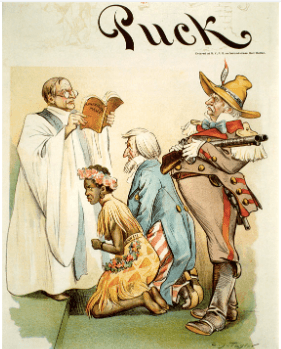
Multiple answers accepted. Teacher discretion!
Name the businessman who helped lead the takeover of Hawaii
Sanford Dole.
A US policy in which the US took an aggressive role in Cuban affairs (ex: Cuba could not negotiate treaties with nations other than the US; US got naval bases and fueling stations in Cuba).
Platt Amendment (1901)
True or false: At the start of the Spanish-American War, the US and Filipinos were allies.
True. Fought Spain together!
This is the term for when a country extends its power into or exercises its power over another country's territory, culture, economy, or government.
Imperialism
What is the cartoonist's message in this political cartoon?
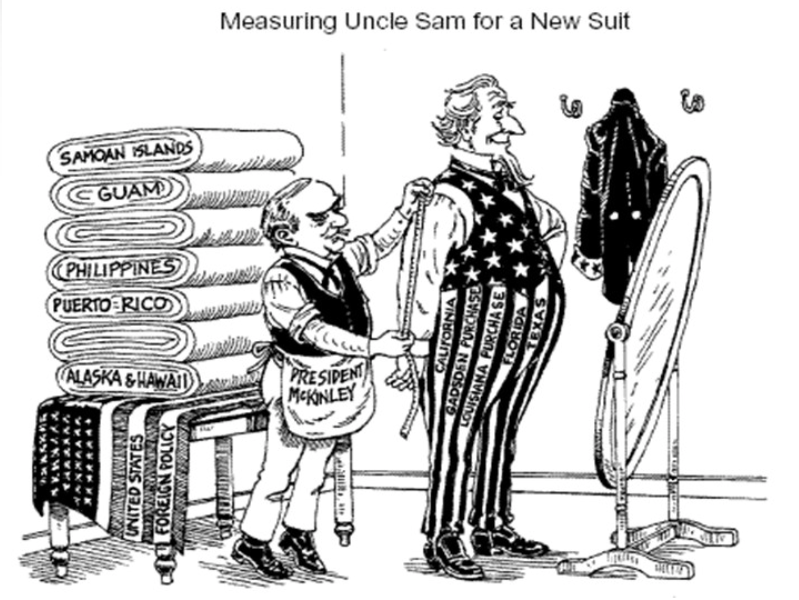
The US already expanded its empire across North America; now, McKinley, a pro-imperialist president looking to add overseas territories to the United States' growing overseas empire.
Name the last queen of Hawaii.
Liliuokalani.
A US policy in which the US stated 1) it would enforce the departure of Spain and 2) US troops would leave Cuba to be free and independent once Cuba was peaceful and ready to self-govern.
Teller Amendment 1898
True or False: Emilio Aguinaldo was exiled to Hong Kong, where he spent the rest of his days.
False. He stockpiled weapons there and went back to fight WITH the US and then AGAINST the US.
These are two different ways of exerting power -- one involving force/payment, the other through shaping the preferences and culture of a nation.
Hard and soft power
What is this cartoon's message about the US's foreign policy goals or mission following the Spanish-American War?
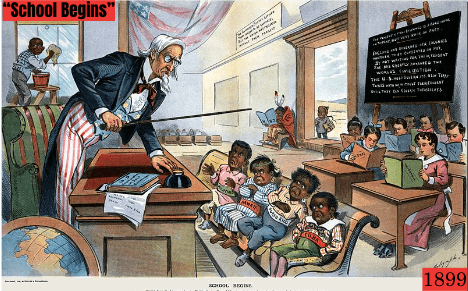
Answers may vary... teacher discretion!
What is the Bayonet Constitution?
King Kalakaua forced to sign (by gunpoint) in 1887 by US businessmen. Stripped native Hawaiians of rights; gave Americans rights.
Name the terms of the 1898 Treaty of Paris.
1. Ended war between Spain and US
2. Spain leaves Cuba
3. Puerto Rico, Guam and Philippines --> US
4. US pays Spain $20 million
Name 2 reasons the US wanted to control the Philippines.
Economic: access to Asian markets
Military/Strategic: protect itself from European rivals
Who said the following and what did it mean? "We shall be as a city upon a hill..."
John Winthrop / The US should serve as a model and leader for the rest of the world.
Name at least 3 out of 4 of the conditions of the 1823 US policy this image represents. 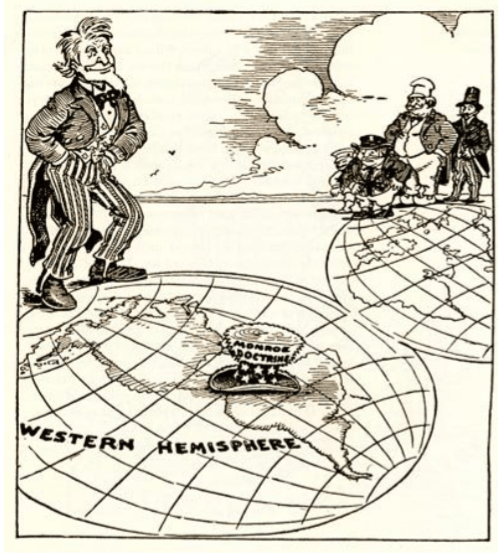
(1) US would not interfere in the affairs of European powers
(2) US would not interfere with existing Euro colonies in the W. Hemisphere
(3) W. Hemisphere closed to future colonization by European powers
(4) any attempt by European power to oppress or control any nation in the W. Hemisphere = hostile act against US
How did US businessmen dethrone the last queen of Hawaii in 1893?
Group of American/European businessmen called in support from US; US sent marines; queen put on house arrest; temporarily relinquished throne in order to avoid bloodshed.
Why was the Treaty of Paris (1898) a turning point in world history?
It marked the decline of the Spanish empire and rise of the US empire (shifting global power dynamics).
Why does Aguinaldo write the following to McKinley? "In closing, Mr. President, let me remind you of the words of Abraham Lincoln who freed a conquered people. “No man is good enough to govern another without that man’s consent.”"
To highlight the contradictions of the US's actions and how it was violating its own creed in attempting to annex the Philippines.
Ronald Reagan said in 1980: "I, in my own mind, have thought of America as a place in the divine scheme of things that was set aside as a promised land." What ideology does this invoke?
American Exceptionalism
Which US policy is this cartoon most likely a depiction of? 
The Roosevelt Corollary 1904 (to the Monroe Doctrine of 1823)
What is the cartoonist's message in this political cartoon?
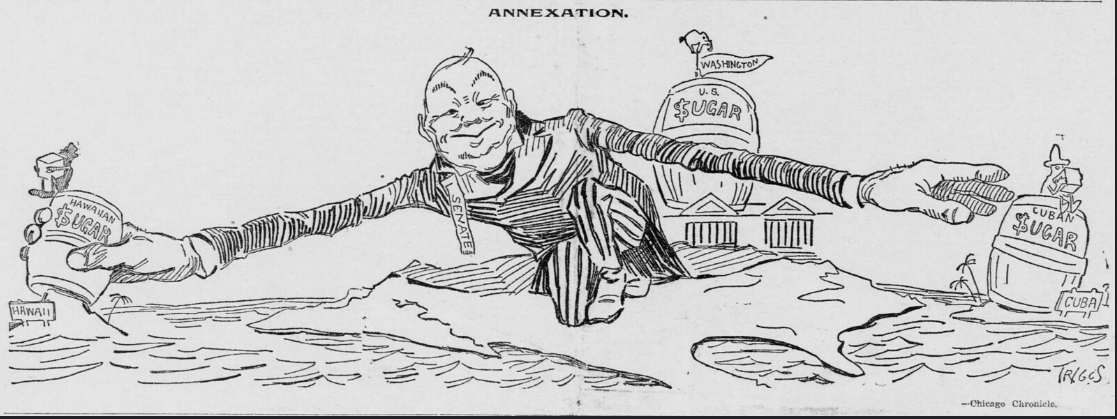
One of the US's main motives in Hawaii and Cuba was economic: its sugarcane (natural resource) and the profit the nation could make from it.
Cuba was less than 500 miles from the shores of the US. It was a huge producer of sugar. Why didn't the US take control of Cuba sooner?
It was colonized by Spain in 1492, so, according to the Monroe Doctrine, the US must recognize Spain's control there and not interfere.
What is the message of this political cartoon? Is it pro-annexation or anti-annexation, and why?
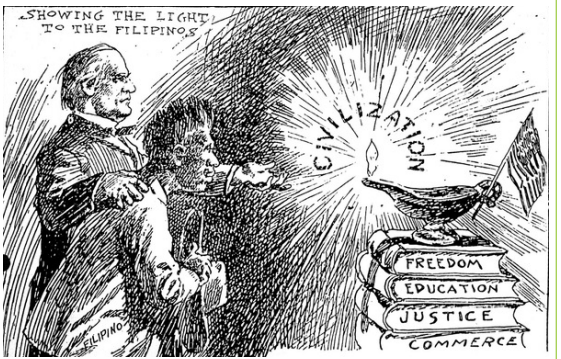
Pro-annexation. U.S. will bring benefits of “civilization” to Filipinos. The cartoon implies Filipinos are incapable of self-rule, and need U.S. aid.